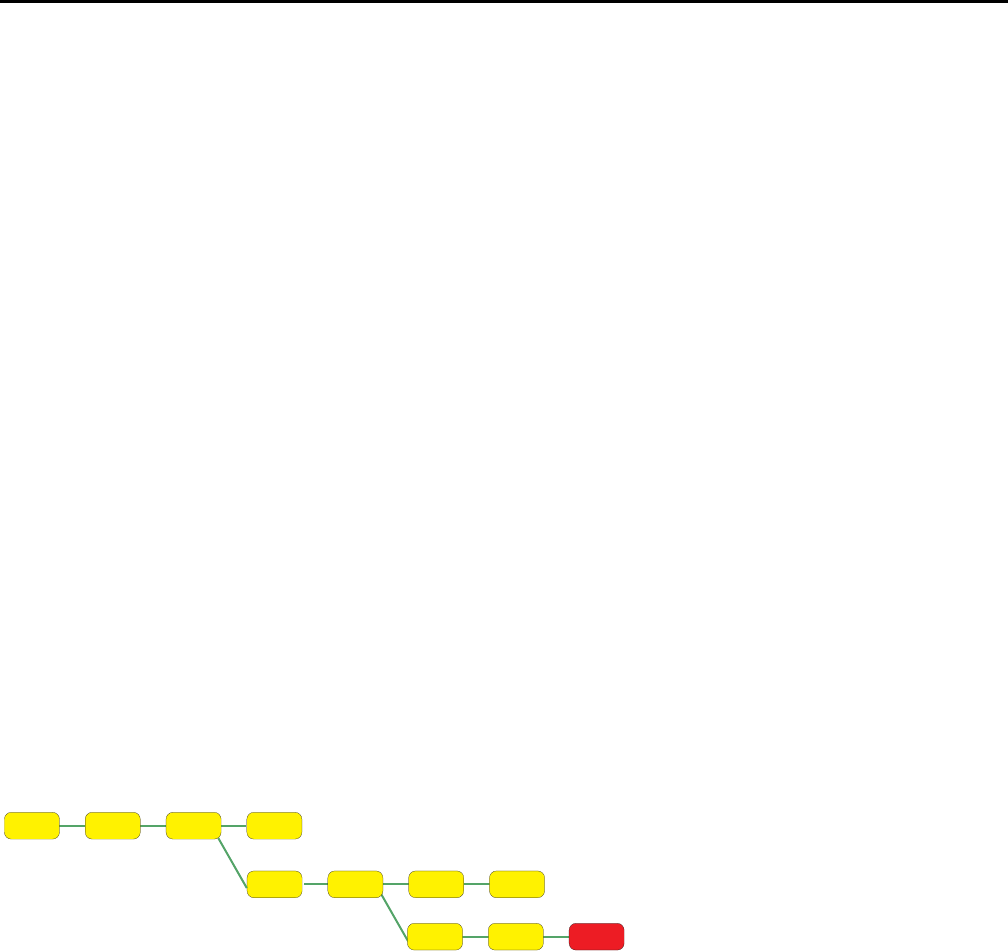User guide
Table Of Contents
- Contents
- Introduction to System 5
- Master Facilities and Channel Strip
- Control, Layouts and Snapshots, and Linking
- Chapter 8: Machine Control (S5P Only)
- Chapter 9: Control Groups and Multi Format Masters
- Chapter 10: Layouts and Snapshots
- Chapter 11: Linking (S5P Only)
- Chapter 12: Dynamic Automation (S5P Only)
- Chapter 13: GPI/O Event System
- Chapter 14: CM403 Film/Post Module (S5 Only)
- Chapter 15: Hybrid Pilot and System 5 Fusion Options
- Appendix A: Compliance Information

System 5 Digital Audio Mixing System User Guide146
Automation Management
Group Coalesce
Group Coalesce transfers automation from the Control Group master fader to the slaves.
1 Press the Panel Viewer’s Main Panel key.
2 Press the Groups button to display the Groups Panel.
3 Press the Coalesce key at the bottom of the Groups Panel.
The Coalesce key begins flashing.
4 Press the Groups key to coalesce the group.
All master fader moves get transferred to the slaves and the Control Group is deleted.
Mix Passes
A mix pass is created each time an automation punch in occurs until the recorder stops. If the recorder stops before the all pa-
rameters punch out, the pass consists of all automation from the first parameter punched in to when playback stops. If playback
stops after a punch out, the pass ends when the last parameter punches out.
Each pass is stored automatically and numbered chronologically. All mix passes are saved with a Mix and loaded when the Mix
is re-opened (see “Save Mix” on page 147).
View Mix Passes
Press the Pass View key at the top of the center section Automation Panel to display the Pass Tree.
To navigate through the Pass Tree to activate a different pass:
1 Rotate the SpinKnob clockwise to move to higher pass numbers, counter-clockwise to move to lower numbers.
2 Press the Enter key to select the highlighted pass.
The following analysis of the example Pass Tree in the figure above explains most of its features:
• Pass 1 contains additional automation, but is based on Pass 0’s automation.
Pass 1 may have new automation, modify Pass 0’s automation, or both.
• Pass 2 is derived from Pass 1 like Pass 1 was from Pass 0.
• Pass 3 is derived from Pass 2.
• Pass 4 is derived from Pass 2, not from Pass 3.
Pass 3 may be an experiment the user saved but decided not to continue using.
• Pass 5 is derived from Pass 4.
• Pass 6 is derived from Pass 5.
• Pass 7 is derived from Pass 6.
• Pass 8 is derived from Pass 5, not from Pass 7.
Passes 6 and 7, like Pass 3, have been saved, but the user decided to continue with a different path.
Mix Pass tree
0
12
3
4
5
6
7
89
10










